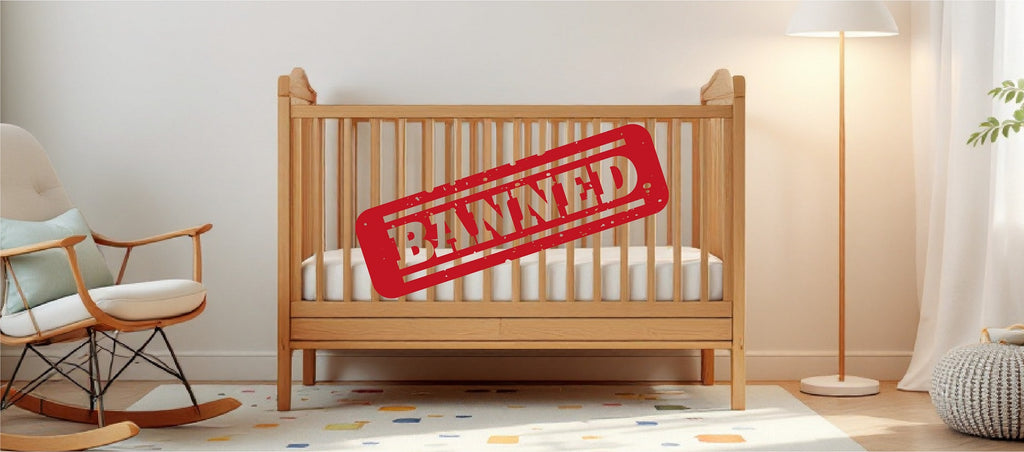Drop-side cots are designed with a sliding mechanism that allows the front panel of the cot to move up and down, making it easier for parents to lift their baby—especially during night-time feeds. Understandably, some parents love the convenience.
But are they truly safe?
The debate over drop-side cots has been ongoing for years. While some parents swear by their short-term convenience, others raise serious concerns. In fact, the U.S. Consumer Product Safety Commission (CPSC) banned drop-side cribs in 2011 due to safety risks. In 2016, Canada joined the growing list of countries banning and moving away from drop-side cots.

Why Were Drop-Side Cots Banned?
Between 2000 and 2009, 32 infant deaths and countless close calls were linked to drop-side cots. The sliding mechanism, while convenient, can create dangerous gaps between the mattress and the cot’s side. This resulted in Sudden Infant Death Syndrome (SIDS) where babies have tragically become trapped, leading to suffocation or strangulation.
Another hidden risk? Sleep-deprived parents may forget to secure the drop-side after use, making it easier for little explorers to climb out and fall—leading to serious injuries.
In recent years, drop-side cots are also gradually being phased out by manufacturers and retailers throughout the world as their popularity continues to decline.
What About Singapore?
Unlike the U.S., Singapore does not have strict regulations banning drop-side cots, meaning they are still available. Ultimately, it’s up to parents to make an informed choice.
At Beblum, we prioritise safety without compromising on functionality. While drop-side cots may seem helpful in the early months, non-drop-side cots offer better long-term value, including multiple height adjustments and convertible designs.
Looking for a safer, smarter alternative?





